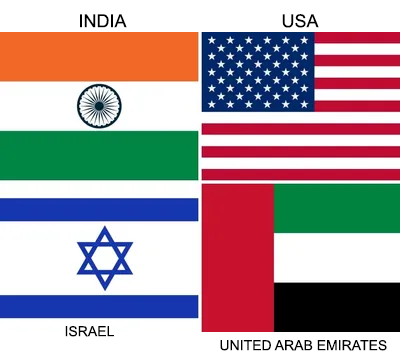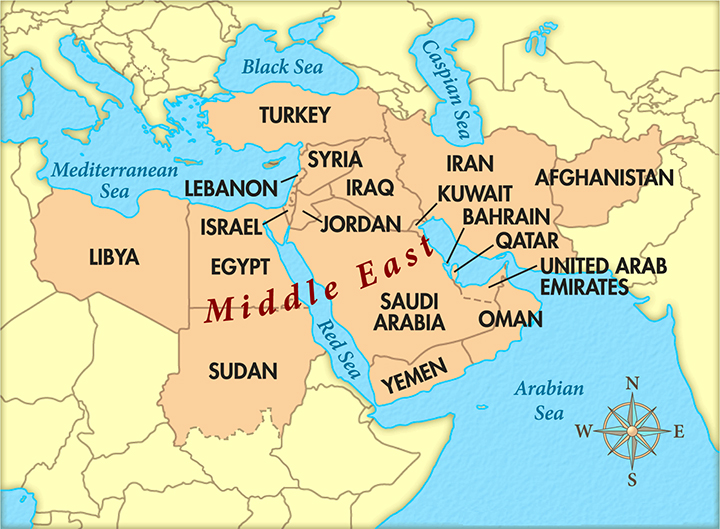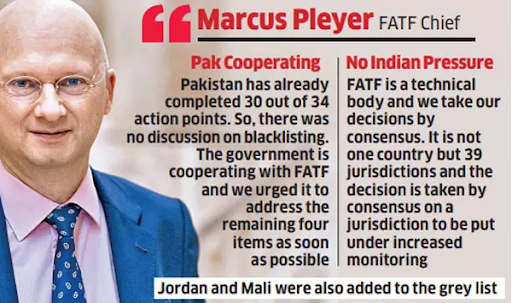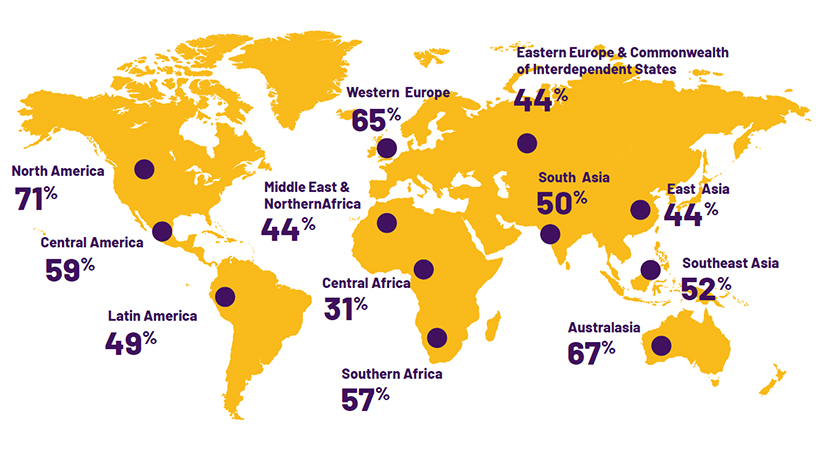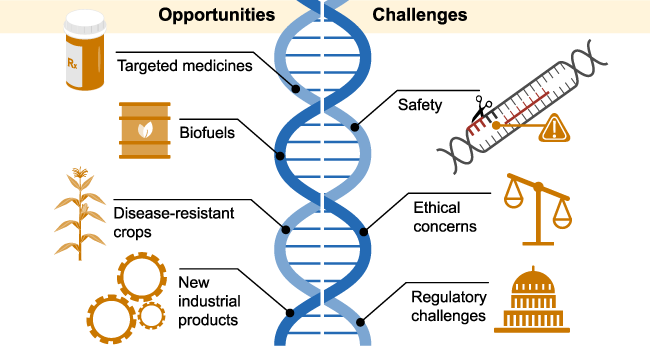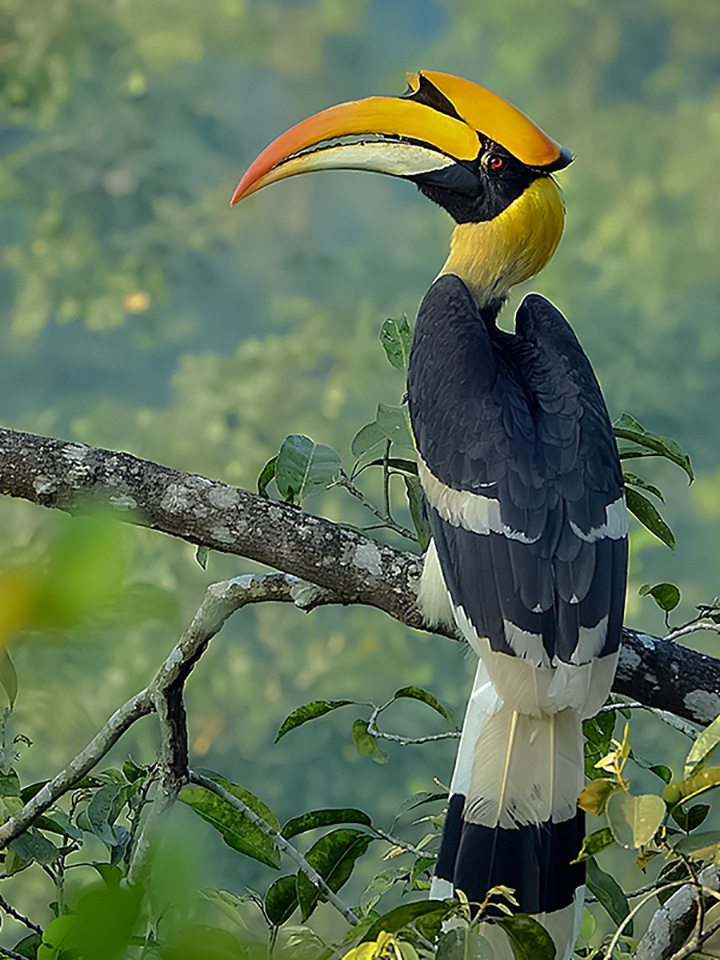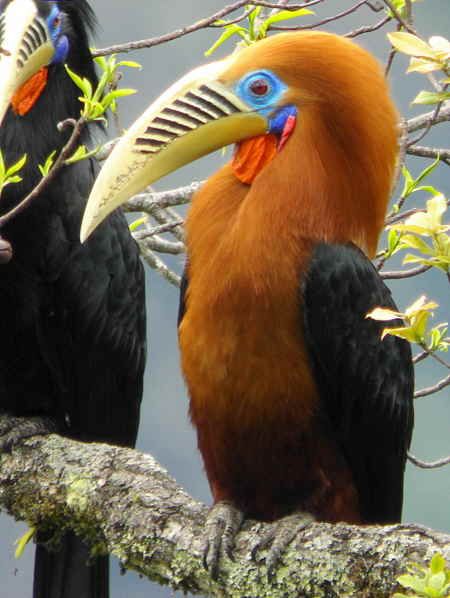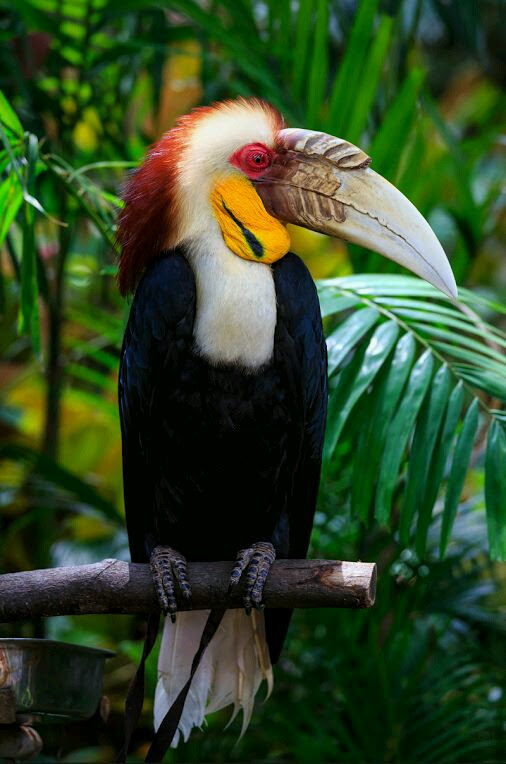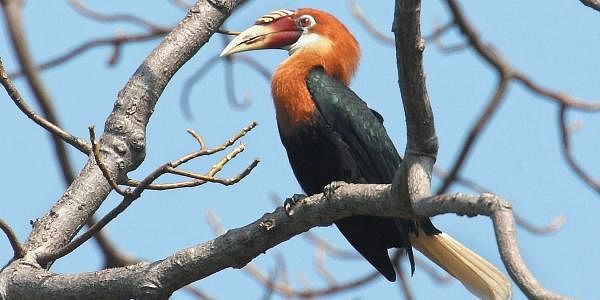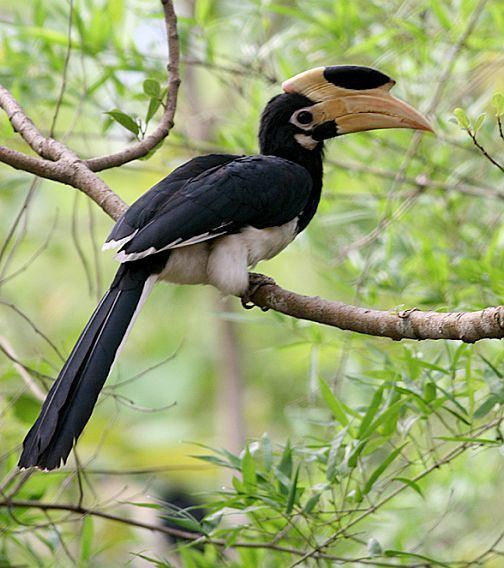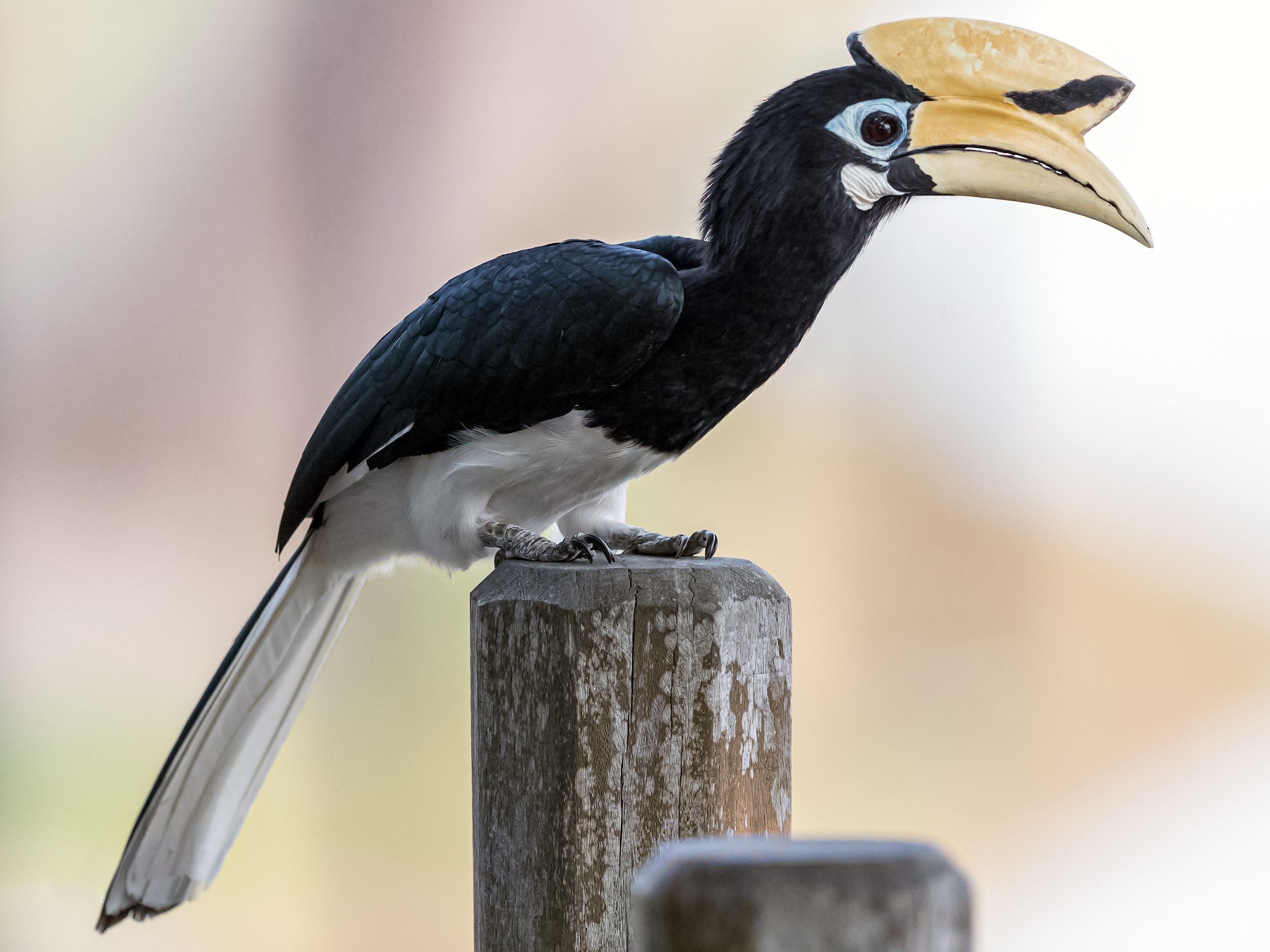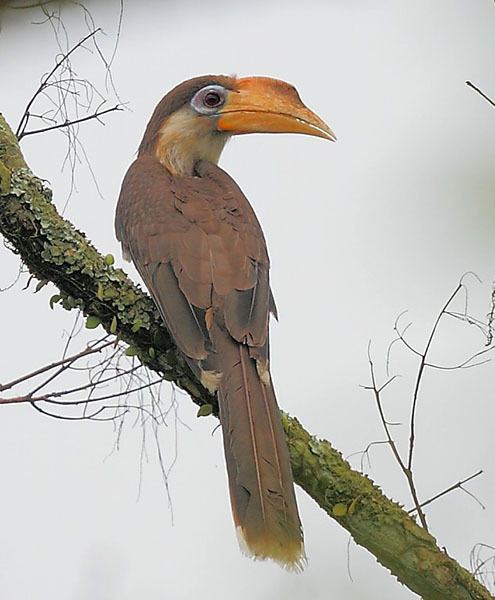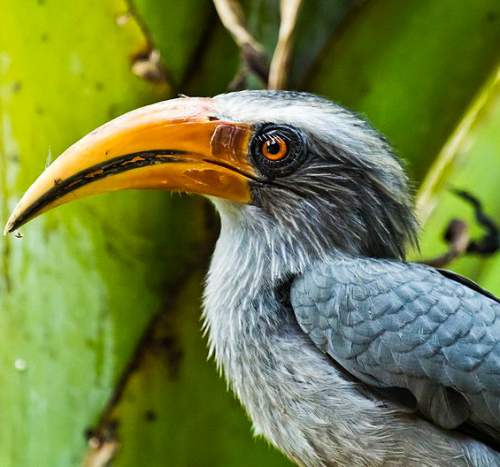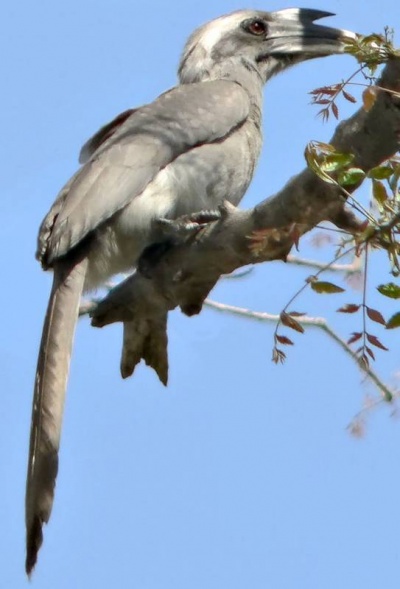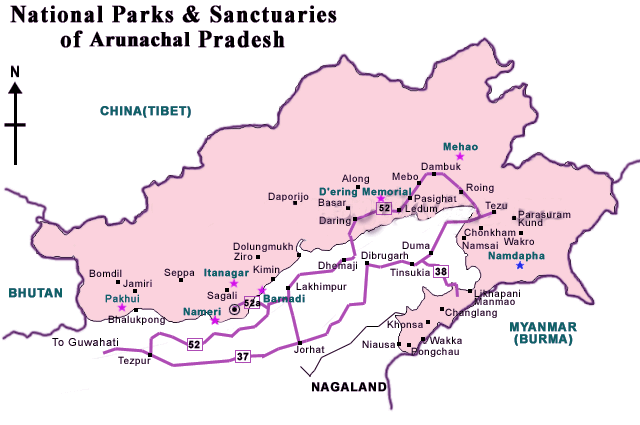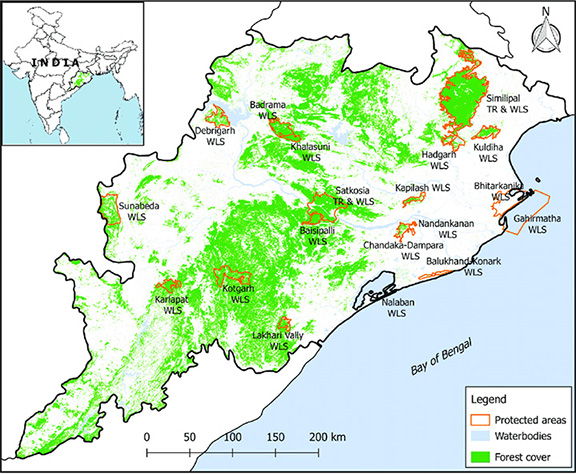New Quad
Why in News
Recently, the Foreign Ministers of India, the US, Israel and the UAE concluded a virtual meeting. The meeting is a strong manifestation of the changes in West Asian geopolitics and formation of another Quad like grouping in the Middle East.
- India’s involvement in this new grouping reflects a shift in its foregin policy.
Key Points
- Factors Responsible for New Grouping:
- Abraham Accord: The new grouping is possible after the resumption of formal diplomatic relations between Israel and the UAE, through the Abraham Accord.
- Tackling Turkey’s Regional Dominance: The new Quad can be termed as a result of converging interests between India, the UAE, and Israel amidst Turkish president Recep Tayyip Erdogan’s assertive claims for the leadership of the Islamic world.
- US Pivot to Asia: The US is clearly seeking to lessen its footprint in the Middle East as part of its pivot to East Asia to tackle China’s rise, which is redrawing West Asia’s traditional equations.
- In order to contain rising China’s assertiveness, the US under its ‘pivot to Asia policy’ has launched Quad initiative, Indo pacific narrative.
- Significance for India:
- Shift Towards a Regional Approach: The four-nation meeting suggests India is now ready to move from bilateral relations conducted in separate silos towards an integrated regional policy.
- India’s Westward Shift: Much in the manner that the “Indo-Pacific” has transformed the way India thinks about the east, the notion of a “Greater Middle East” can provide a huge fillip to India’s engagement with the extended neighbourhood to the west.
- Tackling Pakistan: Further, the new grouping is also driven by Pakistan’s growing alignment with Turkey and its alienation from its traditionally strong supporters in the Arab Gulf - the UAE and Saudi Arabia.
- Deepening Relations: Over the years, India has built vibrant bilateral ties with all the countries in the new grouping.
- It is a member of the Quad with the US, Australia and Japan, which have common concerns and shared interests in East Asia.
- Israel is one of India’s top defence suppliers.
- The UAE is vital for India’s energy security and hosts millions of Indian workers.
Way Forward
- Too Early to Call: While it is too early to speak of the strategic significance of such a grouping, there are areas where it can deepen its engagement - trade, energy ties, fighting climate change and enhancing maritime security.
- Keeping Distance from Regional Rivalries: India should be careful not to get sucked into the many conflicts of West Asia that could intensify amid growing regional rivalries.
- Engaging With Iran: India is facing deepening insecurities in continental Asia after the American withdrawal from Afghanistan.
- So the challenge before India is to retain a healthy relationship with Iran even as it seeks to build a stronger regional partnership with the US-Israel-UAE bloc.
FATF Retains Pakistan on Grey List
Why in News
Recently, the Financial Action Task Force (FATF) retained Pakistan in the ‘greylist’ or 'increased monitoring list’.
- The FATF also announced the ‘greylisting’ of Jordan, Mali and Turkey.
- Botswana and Mauritius had been taken out of the grey list.
Key Points
- About:
- Pakistan is retained for failing to effectively implement the global FATF standards and over its lack of progress on investigation and prosecution of senior leaders and commanders of UN-designated terror groups.
- Pakistan will remain on the grey list till it addresses all items on the original action plan agreed to in June 2018 as well as all items on a parallel action plan handed out by the FATF’s regional partner - the Asia Pacific Group (APG) - in 2019.
- The Pakistan government has two concurrent action plans, with a total of 34 action plan items. It has largely addressed 30 of the items.
- Pakistan has made significant progress and it has largely addressed 26 out of 27 items on the action plan it first committed to in June 2018. The item on financial terrorism still needed to be addressed.
- The 2019 action plan largely focussed on money laundering deficiencies.
- The FATF had advised that Pakistan should continue to work to address its six strategically important deficiencies, which included enhancing international cooperation by amending the money-laundering law and demonstrating that assistance was being sought from foreign countries in implementing the UNSCR 1373 designations.
- The UNSC Resolution 1373 was adopted on 28th September 2001. It declares international terrorism a threat to international peace and security and imposes binding obligations on all UN member states.
- Background:
- The FATF had issued the 27-point action plan after placing Pakistan on the ‘Grey List’ in June 2018. The action plan pertains to curbing money laundering and terror financing.
- Pakistan was first put on the list in 2008, removed in 2009 and then again remained under increased monitoring from 2012 to 2015.
- Pakistan's inclusion in the grey list has adversely impacted that country's prospects of obtaining financial assistance from world bodies such as the International Monetary Fund, World Bank, and Asia Development Bank.
Financial Action Task Force
- About:
- An inter-governmental body established in 1989 during the G7 Summit in Paris.
- Assesses the strength of a country’s anti-money laundering and anti-terror financing frameworks, however it does not go by individual cases.
- Objectives:
- To set standards and promote effective implementation of legal, regulatory and operational measures for combating money laundering, terrorist financing and other related threats to the integrity of the international financial system.
- Headquarters:
- Its Secretariat is located at the Organisation for Economic Cooperation and Development (OECD) headquarters in Paris.
- Member Countries:
- The FATF currently has 39 members including two regional organisations - the European Commission and Gulf Cooperation Council. India is a member of the FATF.
- Lists under FATF:
- Grey List:
- Countries that are considered safe haven for supporting terror funding and money laundering are put in the FATF grey list.
- This inclusion serves as a warning to the country that it may enter the blacklist.
- Black List:
- Countries known as Non-Cooperative Countries or Territories (NCCTs) are put in the blacklist. These countries support terror funding and money laundering activities.
- The FATF revises the blacklist regularly, adding or deleting entries.
- Currently, Iran and Democratic People's Republic of Korea (DPRK) are under High-risk Jurisdiction or black list.
- Grey List:
- Sessions:
- The FATF Plenary is the decision making body of the FATF. It meets three times per year.
Right to Protest
Why in News
The Supreme Court said farmers had the right to protest, but roads cannot be blocked indefinitely (impeding the right of citizens to commute without hindrance).
Key Points
- Right to Protest:
- Although the Right to Protest is not an explicit right under the Fundamental rights, it can be derived from the Right to Freedom of Speech and Expression under Article 19.
- Article 19(1)(a): The Right to free speech and expression transforms into the right to freely express an opinion on the conduct of the government.
- Article 19(1)(b): The Right to association is required to form associations for political purposes.
- These can be formed to collectively challenge government decisions.
- Article 19(1)(c): The Right to peaceably assemble allows people to question and object to acts of the government by demonstrations, agitations and public meetings, to launch sustained protest movements.
- These rights, in cohesion, enable every citizen to assemble peacefully and protest against action or inaction of the State.
- Right to Protest ensures that people can act as watchdogs and constantly monitor governments' acts.
- It provides feedback to the governments about their policies and actions after which the concerned government, through consultation, meetings and discussion, recognizes and rectifies its mistakes.
- Although the Right to Protest is not an explicit right under the Fundamental rights, it can be derived from the Right to Freedom of Speech and Expression under Article 19.
- Restriction on Right to Protest:
- Article 19(2) imposes reasonable restrictions on the right to freedom of speech and expression. These reasonable restrictions are imposed in the interests of the following:
- Sovereignty and integrity of India,
- Security of the State,
- Friendly relations with foreign States,
- Public order,
- Decency or morality
- Contempt of court,
- Defamation
- Incitement to an offence.
- Further, resorting to violence during the protest is a violation of a key fundamental duty of citizens.
- Enumerated in Article 51A, the Constitution makes it a fundamental duty of every citizen “to safeguard public property and to abjure violence”.
- Article 19(2) imposes reasonable restrictions on the right to freedom of speech and expression. These reasonable restrictions are imposed in the interests of the following:
- Related Supreme Court’s Judgements:
- The Supreme Court hearing the plea regarding Shaheen Bagh Protests in 2019, upheld the right to peaceful protest against the law but also cleared that public ways and public spaces cannot be occupied and that too indefinitely.
- SC referred to its 2018 judgment in the Mazdoor Kisan Shakti Sangathan vs Union of India and Another case, which dealt with demonstrations at Delhi’s Jantar Mantar.
- The judgment tried to balance the interests of local residents with those of protesters to hold demonstrations and directed the police to devise a proper mechanism for limited use of the area for peaceful protests and demonstrations and to lay down parameters for this.
- In Ramlila Maidan Incident v. Home Secretary, Union Of India & Ors. case (2012), the Supreme Court had stated, “Citizens have a fundamental right to assembly and peaceful protest which cannot be taken away by an arbitrary executive or legislative action”.
Child Sexual Abuse
Why in News
Recently, a report titled the Global Threat Assessment Report 2021, released by WeProtect Global Alliance has revealed that Covid-19 had contributed to a significant spike in child sexual exploitation and abuse online.
- The report outlines the scale and scope of child sexual exploitation and abuse online, as well as an overview of the global response to the issue.
- WeProtect Global Alliance is a global movement of more than 200 governments, private sector companies and civil society organisations working together to transform the global response to child sexual exploitation and abuse online.
Percentage of People Affected by Online Sexual Harm
Key Points
- Highlights of the Report:
- In the past two years, the reporting of child sexual exploitation and online abuse has reached its highest level.
- Covid-19 created a ‘perfect storm’ of conditions that fuelled a rise in child sexual exploitation and abuse across the globe.
- According to the Internet Watch Foundation, the rise in child ‘self-generated’ sexual material is another worrying trend.
- Transgender/non-binary, LGBQ+ and/or disabled were more likely to experience online sexual harms during childhood.
- Indian Scenario:
- During the pandemic, the National Center for Missing and Exploited Children (NCMEC) indicated 106% increase in reports of suspected child sexual exploitation to its global CyberTipline.
- NCMEC is a non-profit organization (NGO) established by the United States Congress.
- Further, during the Covid-19 lockdown in India, there was a 95% rise in searches for child sexual abuse material.
- During the pandemic, the National Center for Missing and Exploited Children (NCMEC) indicated 106% increase in reports of suspected child sexual exploitation to its global CyberTipline.
- In the past two years, the reporting of child sexual exploitation and online abuse has reached its highest level.
- Problems Related to Child Sexual Abuse:
- Multi-layered Problem: Child sexual abuse is a multi-layered problem which negatively impacts children’s physical safety, mental health, well-being and behavioural aspects.
- Amplification Due to Digital Technologies: Mobile and digital technologies has further amplifies child abuse and exploitation. New forms of child abuse like online bullying, harassment and Child Pornography have also emerged.
- Ineffective Legislaton: Although Government of India has enacted the Protection of Children against Sexual Offences Act 2012 (POCSO Act), it has failed to protect child from sexual abuse. The reasons for this can be following:
- Low Conviction Rate: The rate of conviction under the POCSO act is only about 32% if one takes the average of the past 5 years and the percentage of cases pending is 90%.
- Judicial Delay: The Kathua Rape case took 16 months for the main accused to be convicted whereas the POCSO Act clearly mentions that the entire trial and conviction process has to be done in one year.
- Unfriendly to Child: Challenges related to age-determination of the child. Especially laws that focus on biological age and not mental age.
Indian Initiatives for Preventing Child Sexual Abuse
Way Forward
- Comprehensive Framework: The report calls for prioritising prevention activities against abuse, creating safe online environments for children, besides calling on all with a role to protect children to work together to dramatically improve the response.
- Multi Stakeholder Approach: Developing a comprehensive outreach system to engage parents, schools, communities, NGO partners and local governments as well as police and lawyers to ensure better implementation of the legal framework, policies, national strategies and standards.
New Gene Editing Technique
Why in News
The proposal for Indian regulators to consider a new gene editing technique has been pending with the Genetic Engineering Appraisal Committee for almost two years.
Gene Editing
- Genome editing (also called gene editing) is a group of technologies that give scientists the ability to change an organism's Deoxy-Ribonucleic Acid (DNA).
- These technologies allow genetic material to be added, removed, or altered at particular locations in the genome.
Key Points
- About:
- The Indian Agricultural Research Institute (IARI) has now moved to newer technologies such as Site Directed Nuclease (SDN) 1 and 2.
- New technique aims to bring precision and efficiency into the breeding process using gene editing tools such as CRISPR (Clustered Regularly Interspaced Short Palindromic Repeats), whose developers won the Nobel Prize for Chemistry in 2020.
- SDN genome editing involves the use of different DNA-cutting enzymes (nucleases) that are directed to cut the DNA at a predetermined location by a range of different DNA binding systems.
- After the cut is made, the cell’s own DNA repair mechanism recognizes the break and repairs the damage, using one of two pathways that are naturally present in cells.
- It involves the use of gene editing tools to directly tweak (improve\change) the plant’s own genes instead.
- It would allow plants to be genetically modified without the need for conventional transgenic technology.
- Current Application:
- A research coalition under the Indian Council of Agricultural Research (ICAR), which includes the IARI, is using these techniques to develop rice varieties which are drought-tolerant, salinity-tolerant and high-yielding. They could potentially be ready for commercial cultivation within three years.
- The IARI has previously worked on golden rice, a traditional GM variety which inserted genes from other organisms into the rice plant, but ended trials over five years ago due to agronomic issues.
- A research coalition under the Indian Council of Agricultural Research (ICAR), which includes the IARI, is using these techniques to develop rice varieties which are drought-tolerant, salinity-tolerant and high-yielding. They could potentially be ready for commercial cultivation within three years.
- Significance of New Techniques:
- Safe:
- In this case, you are just tweaking a gene that is already there in the plant, without bringing in any gene from outside.
- When a protein comes from an outside organism, then you need to test for safety. But in this case, this protein is right there in the plant, and is being changed a little bit, just as nature does through mutation.
- Fast:
- It is much faster and far more precise than natural mutation or conventional breeding methods which involve trial and error and multiple breeding cycles. It is potentially a new Green Revolution.
- Safe:
- Status of New Techniques Globally:
- The U.S, Canada, Australia and Japan are among the countries which have already approved the SDN 1 and 2 technologies as not akin to GM, so such varieties of rice can be exported without any problem.
- The European Food Safety Authority has also submitted its opinion that these technologies do not need the same level of safety assessment as conventional gene mutation, though the European Union is yet to accept the recommendation.
- Related Laws in India:
- In India, several rules, guidelines, and policies backed by the “Rules for the Manufacture, Use, Import, Export and Storage of Hazardous Microorganisms/Genetically Engineered Organisms or Cells, 1989” notified under the Environment Protection Act, 1986, regulate genetically modified organisms.
- Apart from it, the National Ethical Guidelines for Biomedical and Health Research involving human participants, 2017, by the Indian Council of Medical Research (ICMR), and the Biomedical and Health Research Regulation Bill implies regulation of the gene-editing process.
- This is especially so in the usage of its language “modification, deletion or removal of parts of heritable material”.
- However, there is no explicit mention of the term gene editing.
Genetic Engineering Appraisal Committee
- It functions under the Ministry of Environment, Forest and Climate Change (MoEF&CC).
- It is responsible for the appraisal of activities involving large-scale use of hazardous microorganisms and recombinants in research and industrial production from the environmental angle.
- The committee is also responsible for the appraisal of proposals relating to the release of genetically engineered organisms and products into the environment including experimental field trials.
- GEAC is chaired by the Special Secretary/Additional Secretary of MoEF&CC and co-chaired by a representative from the Department of Biotechnology (DBT).
Indian Railway to be Net Zero Emitter by 2030
Why in News
Recently, Indian Railways (IR) has announced that it is likely to become world’s first ‘net-zero’ carbon emitter by 2030.
- IR is taking a multi-pronged approach to go green and decarbonise - from increasing its sourcing of Renewable Energy (RE) to electrifying its traction network and reducing its energy consumption.
Key Points
- About:
- Indian Railways: IR is the world’s fourth largest railway network in terms of size. It is one of the largest electricity consumers in the country.
- Passenger Services: Transports 24 million passengers every day across the subcontinent on 13,000 trains covering approximately 67,956 km.
- Freight Services: 3.3 million tonnes of freight per day, and thus the fuel requirements are massive.
- Contribution in Total Emissions: India’s transport sector contributes to 12% of the country’s greenhouse gas emissions with the railways accounting for about 4% of these emissions.
- Potential of Emissions Reduction: The Indian Railways can raise the official target of 50% freight share by 2030, up from its current share of 33%.
- By shifting freight to rail and optimising truck use, India can reduce logistics costs from 14-10% of Gross Domestic Product and carbon dioxide emissions by 70% by 2050 compared to a business-as-usual scenario.
- Indian Railways: IR is the world’s fourth largest railway network in terms of size. It is one of the largest electricity consumers in the country.
- Initiatives taken by Indian Railways:
- Increased the Amount of Freight: Indian Railways to increase the amount of freight moved by it from about 35% in 2015 to 45% by 2030 to reduce overall emissions from transportation.
- Complete Electrification: Complete electrification of Indian Railways is targeted by financial year 2024. It will be the world’s largest 100% electrified rail transportation system by then.
- Use of Solar Power: Plans to install 20 GigaWatts (GW) of solar for both traction loads and non-traction loads.
- Built a 1.7-MW solar power plant in Bina, Madhya Pradesh, in July 2020. It is the first solar energy plant in the world to directly power railway overhead lines, from which locomotives draw traction power.
- A 2.5-MW solar project in Diwana, Haryana.
- Work on a third pilot with a capacity of 50 MW has begun in Bhilai (Chhattisgarh).
- A 16-kW solar power plant has been installed as platform shelter at the Sahibabad Railway Station.
- The railways ministry has installed solar panels at over 960 stations and is using solar power to meet railway station energy needs.
- Participation of Private Sector: The ministry has included provisions for a Letter of Credit (LC) in the event of railway payment default, as well as a penalty for late payment in the model bidding document for solar power developers.
- This is to encourage the private sector to participate in the project.
- Challenges:
- No-objection certificate for open access: The No objection Certificate (NoC) for open access to electricity flow for railways in West Bengal, Tamil Nadu, Chhattisgarh, Odisha, Andhra Pradesh, Kerala and Telangana has not been operationalised due to regulatory challenges that the railways are vigorously pursuing.
- If approval for procuring power through open access is granted in these states, solar deployment may increase.
- Wheeling and banking provision: Full deployment of solar potential will become more feasible if states provide wheeling and banking arrangements.
- Merger of solar purchase obligation and non-solar purchase obligation: The consolidation of solar and non-solar obligations will allow the railways to meet their Renewable Purchase Obligations.
- Unrestricted net metering regulations: Unrestricted net metering for rooftop solar projects would hasten the deployment of railway solar plants.
- No-objection certificate for open access: The No objection Certificate (NoC) for open access to electricity flow for railways in West Bengal, Tamil Nadu, Chhattisgarh, Odisha, Andhra Pradesh, Kerala and Telangana has not been operationalised due to regulatory challenges that the railways are vigorously pursuing.
Net-Zero Emissions
- It refers to achieving an overall balance between greenhouse gas emissions produced and greenhouse gas emissions taken out of the atmosphere.
- First, human-caused emissions (like those from fossil-fueled vehicles and factories) should be reduced as close to zero as possible.
- Second, any remaining GHGs should be balanced with an equivalent amount of carbon removal, for example by restoring forests.
- Global Scenario:
- As of June 2020, twenty countries and regions have adopted net-zero targets.
- The Kingdom of Bhutan is already carbon-negative, i.e. absorbs more CO2 than it emits.
- Indian Scenario:
- India’s per capita CO2 emissions – at 1.8 tonnes per person in 2015 – are around a ninth of those in the USA and around a third of the global average of 4.8 tonnes per person.
- However, overall, India is now the planet’s third-largest emitter of CO2, behind China and the USA.
- Sectors that are the largest emitters: Energy>Industry>Forestry>Transport>Agriculture>Building
Save Hornbills, Save Tropical Forests
Why in News
Scientists from two organisations studied how fruiting plants and hornbills influenced each other’s distribution in the Namdapha Tiger Reserve, Arunachal Pradesh.
- The study strengthens the argument that hornbills are gardeners or farmers of the forest, demonstrating that they farm their own food-rich patches through their seed dispersal.
Key Points
- About the Study:
- Hornbills have a symbiotic relationship with several canopy trees in tropical forests. In the longer term, this likely creates orchards that continue attracting hornbills.
- The study shows that forest patches that have rare trees like Canarium, attract hornbills in large numbers (for food). In turn, hornbills end up dispersing seeds of a diverse array of plant species in higher numbers in these patches.
- Hornbills:
- About: The hornbills (Family Bucerotidae) are a family of birds found in tropical and subtropical Africa and Asia.
- In India: India is home to nine species of hornbills.
- The northeastern region has the highest diversity of hornbill species within India.
- They are the cultural symbols of some ethnic communities in the northeast, specifically the Nyishi of Arunachal Pradesh.
- The Hornbill festival celebrated in Nagaland is named after the bird – Hornbill which is the most revered and admired bird for the Nagas.
- Threats:
- Hornbills are hunted for their casques - upper beak - and feathers for adorning headgear. They are also poached for their meat and medicinal value of their body parts.
- A conservation programme promoting the use of fibre-glass beaks for headgear instead of real hornbill casques has helped reduce some threat to it.
- Illegal logging i.e. cutting of tall trees where the hornbill birds nest and feed has led to destruction of its natural habitat.
- Hornbills are hunted for their casques - upper beak - and feathers for adorning headgear. They are also poached for their meat and medicinal value of their body parts.
|
India’s 9 Hornbill Species |
||
|
Rufous-necked Hornbill |
|
|
|
|
|
|
|
Namdapha National Park
- About: It was declared a National Park in 1983. In the same year, it was also declared as a Tiger Reserve.
- Geography:
- It lies at the international border between India and Myanmar in the state of Arunachal Pradesh.
- Namdapha is surrounded by the Patkai hills to the south and south-east and by the Himalaya in the north.
- Namdapha is in fact the name of a river originating in the Park and it meets Noa-Dehing river. The Noa-Dehing river, is a tributary of the Brahmaputra and flows in a North-South direction in the middle of the National Park.
- Climate: Enjoys the sub-tropical climate. The mountainous part has a mountain type of climate while the low lying plains and valleys experience tropical climate.
- Vegetation: The vegetation is characteristic of tropical evergreen forests (Tropical Rain Forests).
- Fauna:
- It is the only park in the World to have the four species of big cat namely the Tiger, Leopard, Snow Leopard and Clouded Leopard.
- A number of primate species such as Assamese macaque, pig-tailed macaque, stump-tailed macaque.
- Hoolock Gibbons, the only ‘ape’ species found in India is found in this National Park.
- Of the many other important animals are the elephants, black bear, Indian Bison, and a variety of arboreal animals.
- Among the bird species, most notable are the White winged Wood Ducks, a rare and endangered species. It is also home to 5 out of 9 species of Hornbill including the great Indian hornbill.
Debrigarh Wildlife Sanctuary: Odisha
Why in News
Recently, the Odisha Government has decided to relocate around 420 families from four zero-connectivity villages in Debrigarh wildlife sanctuary.
- The relocation is aimed at reducing man-animal conflict and providing better living conditions to the displaced families.
Key Points
- Location:
- It is situated in the Bargarh district of Odisha near Hirakud dam (Mahanadi River) and covers an area of 346.91 square kilometers.
- It is bounded on the east and north by the huge Hirakud reservoir.
- It was declared as a wildlife sanctuary on 8th February 1985.
- It is an important site for in situ conservation of wildlife and its habitat in the state of Odisha
- Biodiversity:
- Flora:
- Dry deciduous forests
- Fauna:
- Four-horned antelope, Indian leopard, Indian elephant, sambar, chital, gaur, etc.
- Flora:
- Major Protected Areas in Odisha:
- National Parks:
- Wildlife Sanctuaries:
- Badrama WLS
- Chilika (Nalaban island) WLS
- Hadgarh WLS
- Baisipalli WLS
- Kotagarh WLS
- Nandankanan WLS
- Lakhari Valley WLS
- Gahirmatha (Marine) WLS
- National Parks:

